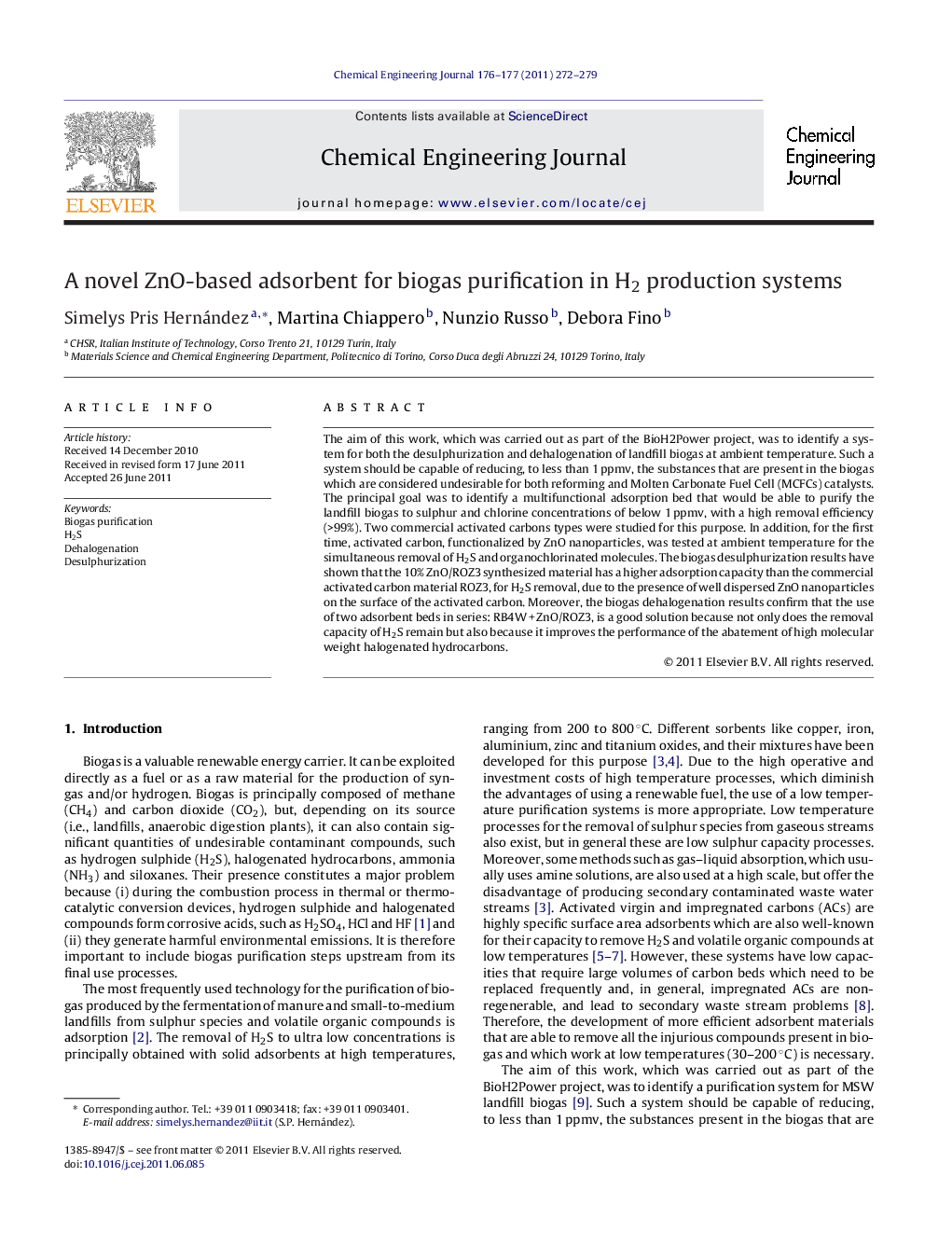| Article ID | Journal | Published Year | Pages | File Type |
|---|---|---|---|---|
| 150699 | Chemical Engineering Journal | 2011 | 8 Pages |
The aim of this work, which was carried out as part of the BioH2Power project, was to identify a system for both the desulphurization and dehalogenation of landfill biogas at ambient temperature. Such a system should be capable of reducing, to less than 1 ppmv, the substances that are present in the biogas which are considered undesirable for both reforming and Molten Carbonate Fuel Cell (MCFCs) catalysts. The principal goal was to identify a multifunctional adsorption bed that would be able to purify the landfill biogas to sulphur and chlorine concentrations of below 1 ppmv, with a high removal efficiency (>99%). Two commercial activated carbons types were studied for this purpose. In addition, for the first time, activated carbon, functionalized by ZnO nanoparticles, was tested at ambient temperature for the simultaneous removal of H2S and organochlorinated molecules. The biogas desulphurization results have shown that the 10% ZnO/ROZ3 synthesized material has a higher adsorption capacity than the commercial activated carbon material ROZ3, for H2S removal, due to the presence of well dispersed ZnO nanoparticles on the surface of the activated carbon. Moreover, the biogas dehalogenation results confirm that the use of two adsorbent beds in series: RB4W + ZnO/ROZ3, is a good solution because not only does the removal capacity of H2S remain but also because it improves the performance of the abatement of high molecular weight halogenated hydrocarbons.
► 10% ZnO/ROZ3 synthesized material has a higher H2S adsorption capacity than the commercial activated carbon material ROZ3. ► Higher adsorption capacity due to the presence of well dispersed ZnO nanoparticles on the surface of the activated carbon. ► Biogas dehalogenation results confirm that the use of two adsorbent beds in series: RB4W + ZnO/ROZ3, is a good solution. ► The performance of the abatement of undesirables high molecular weight halogenated hydrocarbons is also improved.
